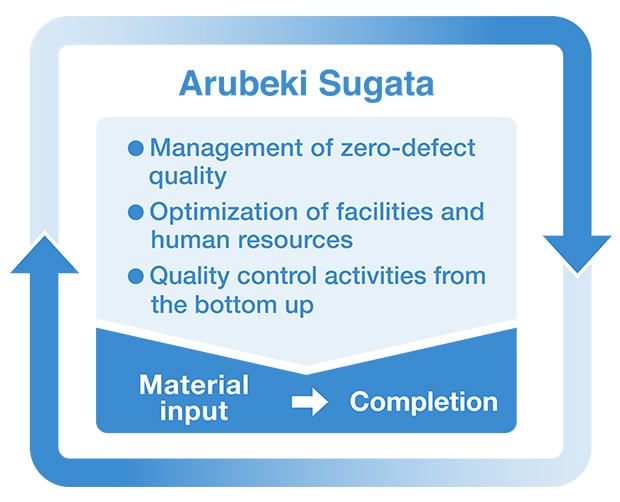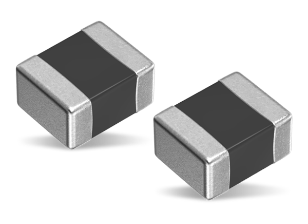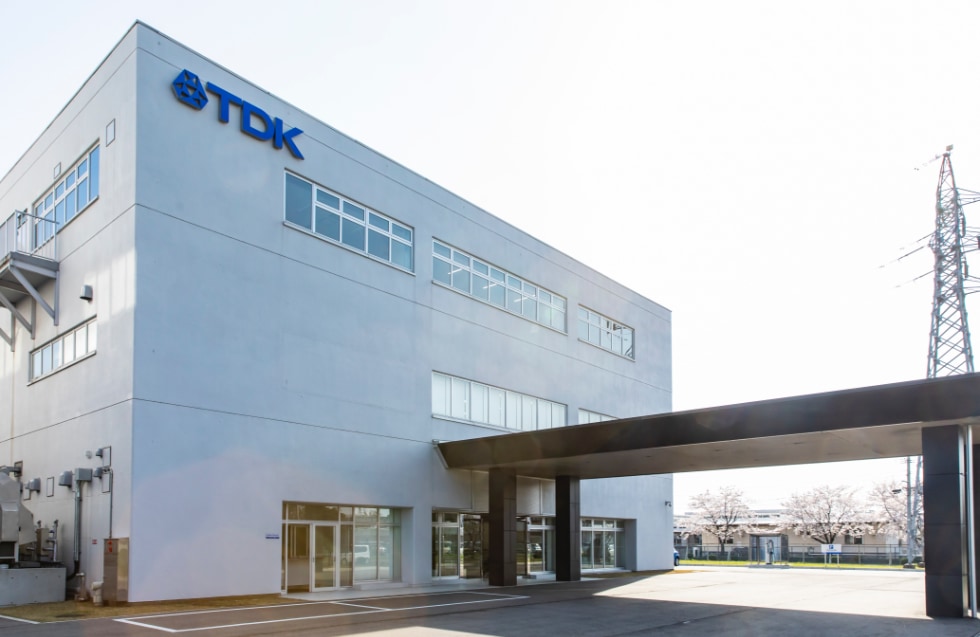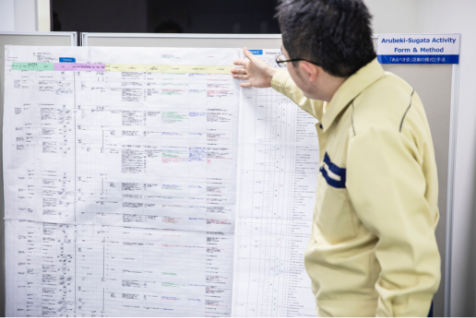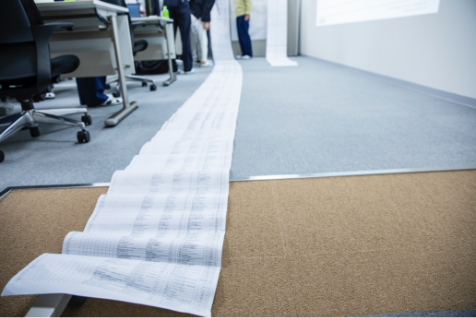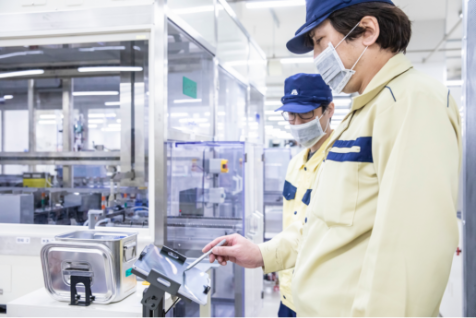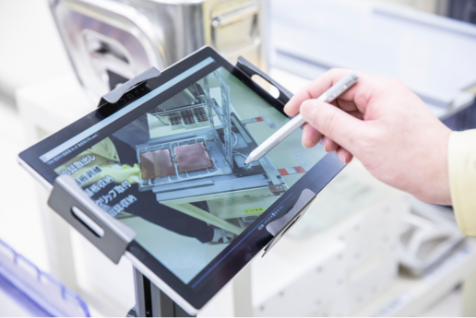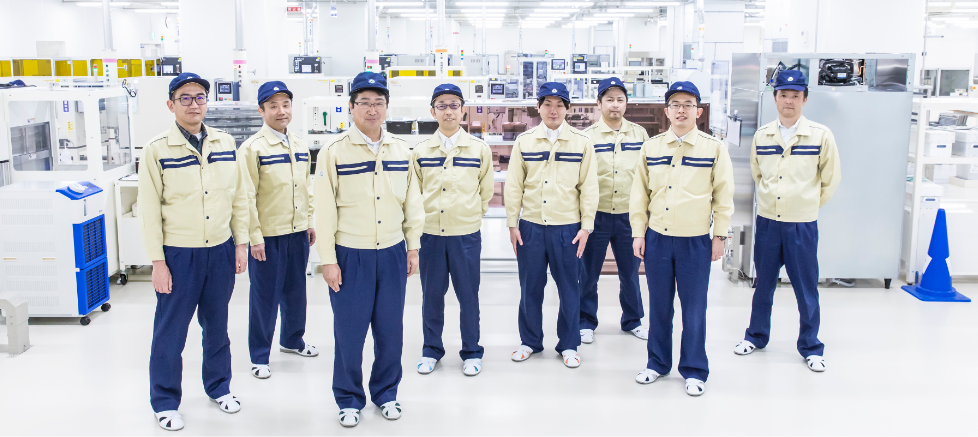Sustainability | Governance | Quality AssurancePursue “Zero-Defect Product Quality”
The pursuit of zero-defect product quality extending from raw material procurement to manufacture of the final product forms the basis of TDK’s Monozukuri (manufacturing excellence).
Along with messages from the quality managers of the TDK Group and TDK Electronics, and we also report on how Arubeki-Sugata (ideal process) is put into practice in the model line at the Tsuruokahigashi Factory of TDK Electronics Factories Corporation.
What is the Arubeki-Sugata that Everyone should Strive for to Realize Zero-Defect Product Quality?
What zero-defect product quality means
Since 2013, TDK has been intensifying activities aimed at ensuring Arubeki-Sugata within the Monozukuri framework. The aim is to realize a level of quality that makes it possible to manufacture products with zero defects. In concrete terms, this involves thoroughly reducing waste on the manufacturing site to improve efficiency, and always aiming to deliver the best possible quality to the customer. When defects are eliminated, there is no waste of resources and materials, a fact that has positive repercussions also for society at large, contributing to a reduction in pressure on the environment. This is at the root of TDK's Monozukuri and Kotozukuri (integrated solutions) concepts.
Devising Arubeki-Sugata solutions with the participation of everyone
Activities aimed at Arubeki-Sugata need to cover all processes, carefully identifying various risks. This requires an understanding not only of one’s own area of responsibility but also of the entire process. It therefore is crucial to ensure the participation of all employees in thoroughly examining all the issues. Unless a risk is fully understood, it is not possible to devise proper countermeasures. Four kinds of defects can cause quality problems on the manufacturing floor: design defects, material defects, process defects, and management defects. Together with all on-site staff members, we explored solutions to these issues. During this process, four key elements emerged, namely the presence of an on-site improvement leader, teamwork, daily PDCA, and passion. In other words, the most important factor in achieving zero-defect product quality can be said to be “people.” I believe that TDK’s Arubeki-Sugata represents the ultimate conclusion drawn from an analog type analysis of the way dedicated people perform their work. Without an understanding of what may happen at any given point in a process, merely trying to rely on technologies such as AI and robotics will not result in zero-defect product quality. When the actual people involved in design, technology, and process execution thoroughly engage with an issue, bringing a high level of insight to the table, then we can be sure to make significant progress toward zero-defect product quality.
Our future challenge: preventing problems before they arise
Since we launched the Arubeki-Sugata activities, we have seen many successful examples. These in turn have contributed to enhanced awareness and ambition in the workplace, creating a virtuous cycle. Recently, even part-time staff can be heard talking about zero defects. This of course makes me very happy, and I see it as my mission to further spread the word and ensure that it leads to definite quality improvements. Also, it is a fact that the customers’ expectations with regard to quality are constantly evolving with the times. For example, electric vehicles are increasingly gaining acceptance, and electronic components make up more than 70 percent of such vehicles, so that customers also have come to regard electronic components as key parts. Because a car carries precious human cargo, our responsibility as the manufacturer of such components is enormous. We must therefore strive toward zero-defect product quality with all our might. The utilization of robots and AI for the standardization of manufacturing processes will be part of these endeavors. However, it is people who ultimately make this possible. While adopting some of the powerful principles of Industry 4.0, the challenge for the future is to prevent problems before they even begin to happen.
Takeshi Takahashi
General Manager of Quality Assurance HQ
TDK Corporation
Zero-defect quality begins in the first stage of development
Zero-defect quality must be designed into our products and processes right from the start. It is our responsibility to our customers and to society as a whole that our customers’ products and applications function properly and safely for their entire life cycle. Zero-defect quality also means that we manufacture our products without wasting resources, whether we’re talking about raw materials, semi-finished and finished goods in our production, energy or water. The result is a highly efficient production process that contributes to sustainability.
In order to achieve zero-defect quality, we need not only an advanced quality management system, but above all well-trained and competent staff. That’s why we implemented a compulsory training program for all of our factories at TDK Electronics. We also need perfectly tuned and maintained production equipment. We are improving our manufacturing processes with Industry 4.0 methods by evaluating production data in real time and employing predictive maintenance to eliminate defect risks before they even occur. It is out standard practice to identify and assess such risks during product development. Thus, zero-defect quality begins in the first stage of development.
Dr. Werner Pint
Head of the Technology
Quality Corporate Department,
TDK Electronics AG
A manufacturing floor with a design that reflects Arubeki-Sugata insights
A model line for Arubeki-Sugata
The Tsuruokahigashi Factory which started production in August 2017 is positioned as a model line facility. Thin-film coil components for automotive use, whose demand is expected to rise further, are manufactured here and become components that are directly connected to life and safety. Zero-defect product quality therefore is crucial both for the customer and for society. A framework covering the four quality aspects of design, material, process, and management has been put in place to achieve this. The Arubeki-Sugata activities at the Tsuruokahigashi Factory are directed at realizing zero management quality defects. They take the form of “workflow analysis,” “Arubeki-Sugata work procedure/management design,” “identifying design and manufacturing problems and implementing countermeasures,” and “reflecting results in work key points.” In an environment designed to ensure safety and quality, the aim is to create processes where operators are thoroughly familiar with their own process as well as its methods and assessment of its intended results, to the extent that they can explain them fully.
Think for yourself, devise improvements, and implement them through team cooperation
As a first step, the risks in 392 operations were methodically identified, resulting in a list of 1,702 problems. The Arubeki-Sugata for each problem and risk was then examined and defined, and a manual to convey the information to the manufacturing floor in an easy to understand manner was created. The aim was a concise, memorable format, with slogans such as “no waste, no wobble, no worry.” For example, risks and losses associated with transfer operations were reduced (no waste), standardized work operations and work layouts were defined to eliminate unevenness (no wobble), and work flow lines were designed to enable natural movement without strain (no worry).
QC activities have a particularly important role to play in this undertaking, and it is important to think for yourself, devise improvements, and implement them through team cooperation. A wide range of measures has been implemented to that end. Staff recite the purpose of their own process daily, to foster a clear understanding of the positioning of one's work within the overall process sequence. Tools such as monitors and tablets are used for discussions and to allow checking operations via video at any time by anyone. Special areas created within the work area are set aside for meetings, allowing teams to get together and engage in close communication. Through the steady repetition of diligent actions, we aim to achieve zero-defect product quality.
A well-trained workforce is the key to zero-defect product quality
Thorough implementation of Arubeki-Sugata activities has resulted in an 80% improvement in workplace-related defect ratio and an increase in productivity by at least 60%. However, even with all the effort that went into identifying issues, defects due to common mistakes still occur. Unless defects really shrink to zero, we can’t say that we have achieved our goal. We must diligently repeat the cycle of identifying risks, defining the Arubeki-Sugata of operations and management design, and clarify remaining risks. Trying to reduce risks to the utmost degree is our mission. And the most important aspect for the realization of this goal is human resources training. Training of staff opens up the way toward zero-defect product quality. As we move into the future, we will strengthen Japan’s unique Monozukuri power.

